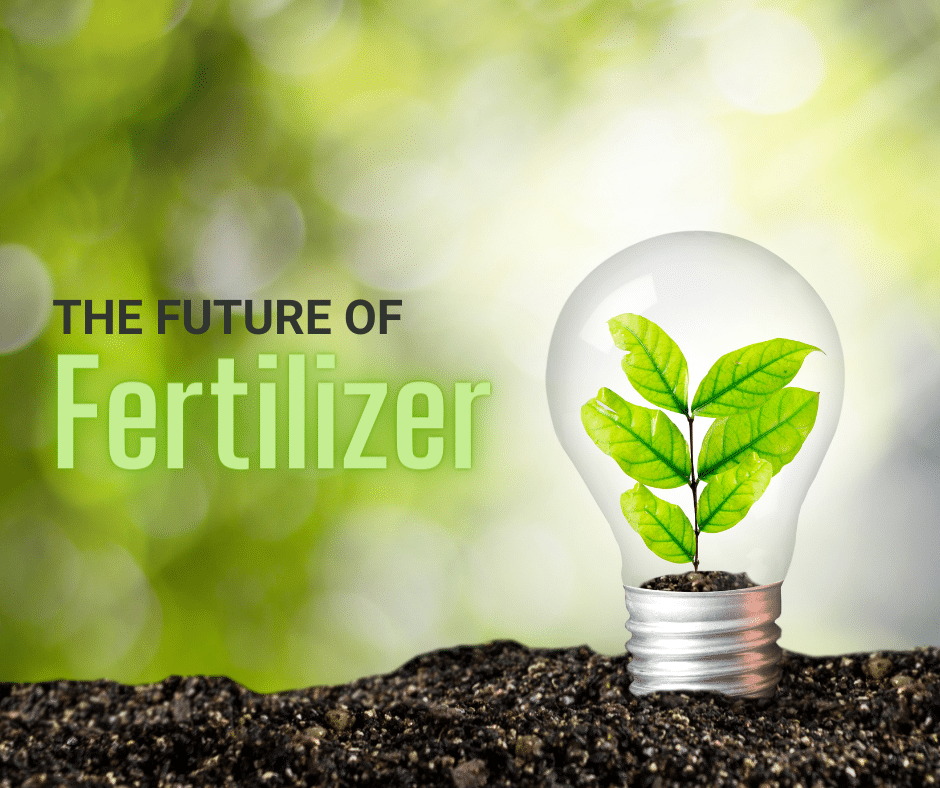For more than 100 years, the fertilizer industry – and agriculture at large – has benefited off the work of science and technology. Starting in 1918, with the Haber Bosch process, which made the production of ammonia fertilizer economically feasible. Since then, the industry has kept refining not just how fertilizers are made, but how they are used by plants.
It’s this later work that I think about when I think of the future of fertilizer. Agriculture faces challenges, that while not new to the conversation today, they are vitally important to the future of our industry and the planet. Whether it’s finding sustainable ways to feed a growing global population or responding to environmental concerns at local levels, we will need to think creatively about fertilizer going forward.
Fertilizers are one tool farmers can’t do without. They help replenish the soil after each cropping season and allow for the growth of crops at yields that provide sustained global food production. However, nitrogen and phosphorus applied without consideration of 4R principles can lead to nutrient losses impacting both air and water quality. Enhanced efficiency fertilizers (EEFs) and other new product technologies and formulations can increase a plant’s ability to use fertilizers and help keep fertilizer in the plant’s root zone – both of which reduce nutrient loss. In a farm’s conservation system, these products can reduce agriculture’s impacts on the environment while maintaining or increasing productivity and profitability. And for many in the food supply chain, these products can be an important element for reaching sustainability goals that focus on improving water quality and mitigating climate change.
There has been much development to make sure that fertilizer stays in the soil in a form that is readily available for plant uptake. Whether that is through the use of 4R Nutrient Stewardship, EEFs, biostimulants, or any number of new technologies on the horizon, the fertilizer industry has always looked for solutions. And we’re now presented with a new opportunity for the next generation of commercial fertilizers.
This summer, TFI partnered with the Environmental Protection Agency (EPA) and the U.S. Department of Agriculture (USDA) in the NextGen Fertilizer Challenges, which aims to accelerate the development of innovative fertilizer product technologies and to increase the use of EEFs that maintain or increase crop yields and reduce environmental impacts to air, land, and water.
Public-private partnerships, such as this one, are key to improving the registration process for new fertilizers and increasing farmers’ access to new technologies that provide needed agronomic benefit. The NextGen fertilizer challenge will further stimulate innovation and increase on-farm adoption of effective fertilizer product technologies.
Additionally, the development of new enhanced efficiency and NextGen fertilizers can impact farmers’ bottom lines. When farmers use EEFs and other products as part of their 4R Nutrient Stewardship management, they have the opportunity to increase yields, decrease costs, and reduce environmental losses. 4R practices are based on applying the right source of fertilizer at the right rate, the right time, and in the right place. Getting the 4Rs right means increasing nutrient uptake by the crop to improve farmer ROI and crop productivity. And, reducing losses to the environment means improved water quality and reduced ammonia and greenhouse gas emissions.
Through the 4R Farming initiative, we are seeing evidence of this through on-farm data. I have two examples to share here, but more data is available at 4Rfarming.org.
From 2014 to 2017, a corn farmer in Illinois went from using basic 4R principles to an advanced strategy that incorporated variable rate fertilizer applications throughout the growing season, using enhanced efficiency fertilizers, and other 4R practices. By 2017, his yields had increased, nutrient use efficiency had improved, and impressively, he saw a 34 percent reduction in CO2 emissions coming from his fields.
A Virginia corn farmer, whose farm backs right up to the Rappahanock River, has been practicing the 4Rs for many years. He’s incorporated many advanced practices in conjunction with conservation and the use of enhanced efficiency fertilizers. On the fields where he has implemented an advanced 4R strategy, he saw a 14 percent CO2 emissions reduction, all while his cost per acre decreased.
While we can’t solely attribute these improvements to the use of EEFs and other fertilizer technologies, we are seeing that their use as part of a broader 4R management strategy is yielding results for farmers and the environment across the country.
The NextGen Fertilizer Challenges will further stimulate innovation and increase on-farm adoption of these effective fertilizer product technologies. Details about the challenges are available on the EPA website and winners will be announced in December 2020 for the existing EEFs challenge and February 2020 for the Next Gen Fertilizer Innovation challenge.
- EEFs: Environmental and Agronomic Challenge: This challenge aims to identify existing EEFs currently on or near-market that meet or exceed certain environmental and agro-economic criteria. Submissions are due October 30, 2020.
- Next Gen Fertilizer Innovations Challenge: This challenge aims to identify concepts for novel technologies for fertilizers that can reduce the environmental effects from modern agriculture while maintaining or increasing crop yields. Submissions to the Next Gen Fertilizer Innovations Challenge are not near-market and may include EEFs and other product technologies used with or in combination with commercial fertilizers. Submissions are due November 30, 2020.
TFI and our members are excited to be part of these future solutions for the American farmer and the environment.

